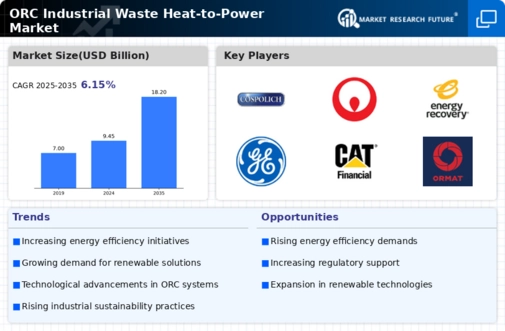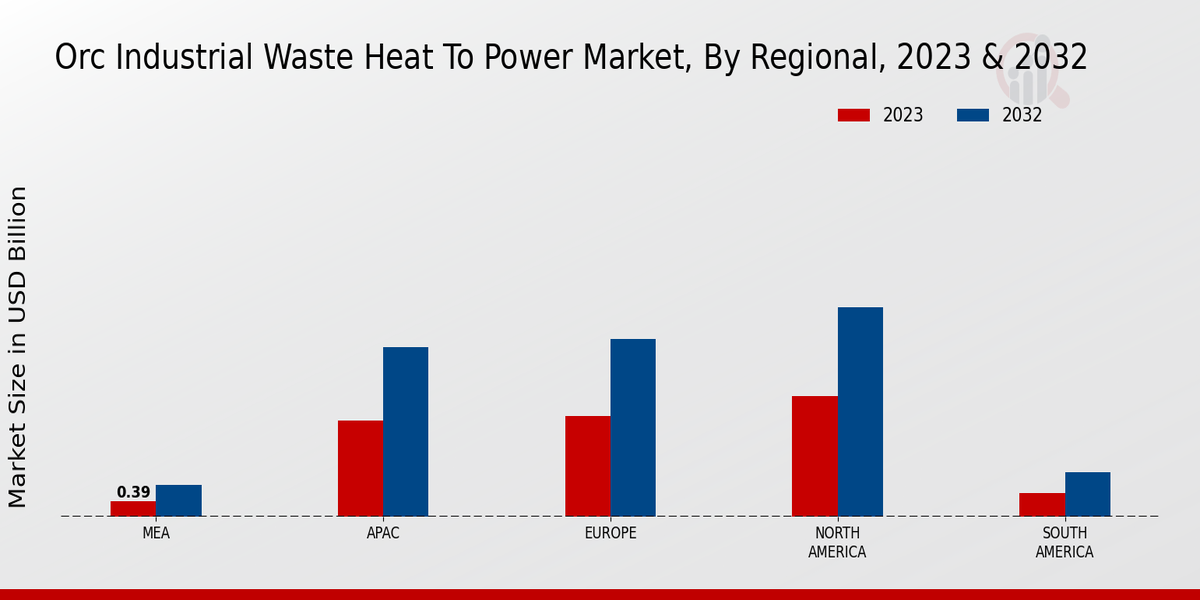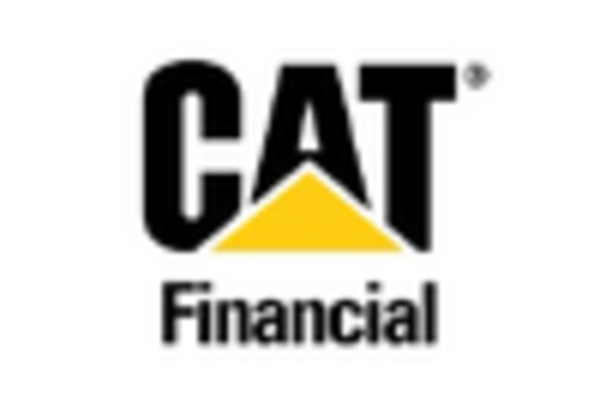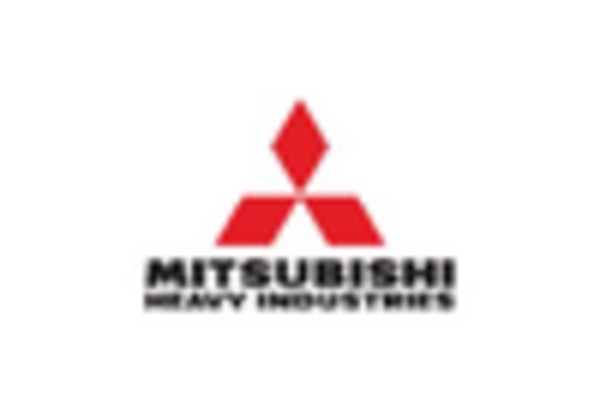Rising Environmental Regulations
The ORC Industrial Waste Heat-to-Power Market is significantly influenced by stringent environmental regulations aimed at reducing greenhouse gas emissions. Governments are implementing policies that encourage industries to adopt cleaner technologies. For instance, regulations that mandate reductions in carbon emissions are pushing companies to explore waste heat recovery options. The ORC technology offers a viable solution, as it utilizes waste heat that would otherwise be lost, thus contributing to lower emissions. As industries strive to comply with these regulations, the demand for ORC systems is expected to rise, potentially leading to a market growth rate of over 10% annually in the coming years.
Increasing Energy Efficiency Demands
The ORC Industrial Waste Heat-to-Power Market is experiencing a surge in demand for energy efficiency solutions. Industries are increasingly pressured to optimize energy consumption and reduce operational costs. This trend is driven by rising energy prices and the need for sustainable practices. According to recent data, industries that implement waste heat recovery systems can achieve energy savings of up to 30%. This not only enhances profitability but also aligns with corporate sustainability goals. As a result, the adoption of Organic Rankine Cycle (ORC) technology is likely to grow, as it effectively converts low-temperature waste heat into usable power, thereby improving overall energy efficiency.
Technological Innovations in ORC Systems
The ORC Industrial Waste Heat-to-Power Market is benefiting from continuous technological advancements that enhance the efficiency and reliability of ORC systems. Innovations such as improved working fluids and advanced heat exchangers are making ORC systems more effective in converting waste heat into electricity. Recent studies indicate that modern ORC systems can achieve efficiencies exceeding 20%, which is a notable improvement over older models. These advancements not only increase the attractiveness of ORC technology for industrial applications but also expand its applicability across various sectors, including manufacturing and chemical processing, thereby driving market growth.
Growing Industrialization and Energy Demand
The ORC Industrial Waste Heat-to-Power Market is poised for growth due to the increasing pace of industrialization and the corresponding rise in energy demand. As industries expand, the need for efficient energy solutions becomes more pronounced. The integration of ORC systems allows industries to harness waste heat generated during production processes, thus addressing energy shortages while minimizing environmental impact. Projections suggest that the industrial sector's energy consumption will increase by approximately 25% over the next decade, creating a substantial opportunity for ORC technology to play a critical role in meeting this demand.
Economic Incentives for Renewable Energy Adoption
The ORC Industrial Waste Heat-to-Power Market is also driven by economic incentives provided by governments to promote renewable energy technologies. Financial support mechanisms, such as tax credits and grants, are encouraging industries to invest in ORC systems. These incentives not only reduce the initial capital investment but also enhance the return on investment for companies adopting waste heat recovery solutions. As industries seek to capitalize on these economic benefits, the adoption of ORC technology is likely to accelerate, contributing to a more sustainable energy landscape.


















Leave a Comment